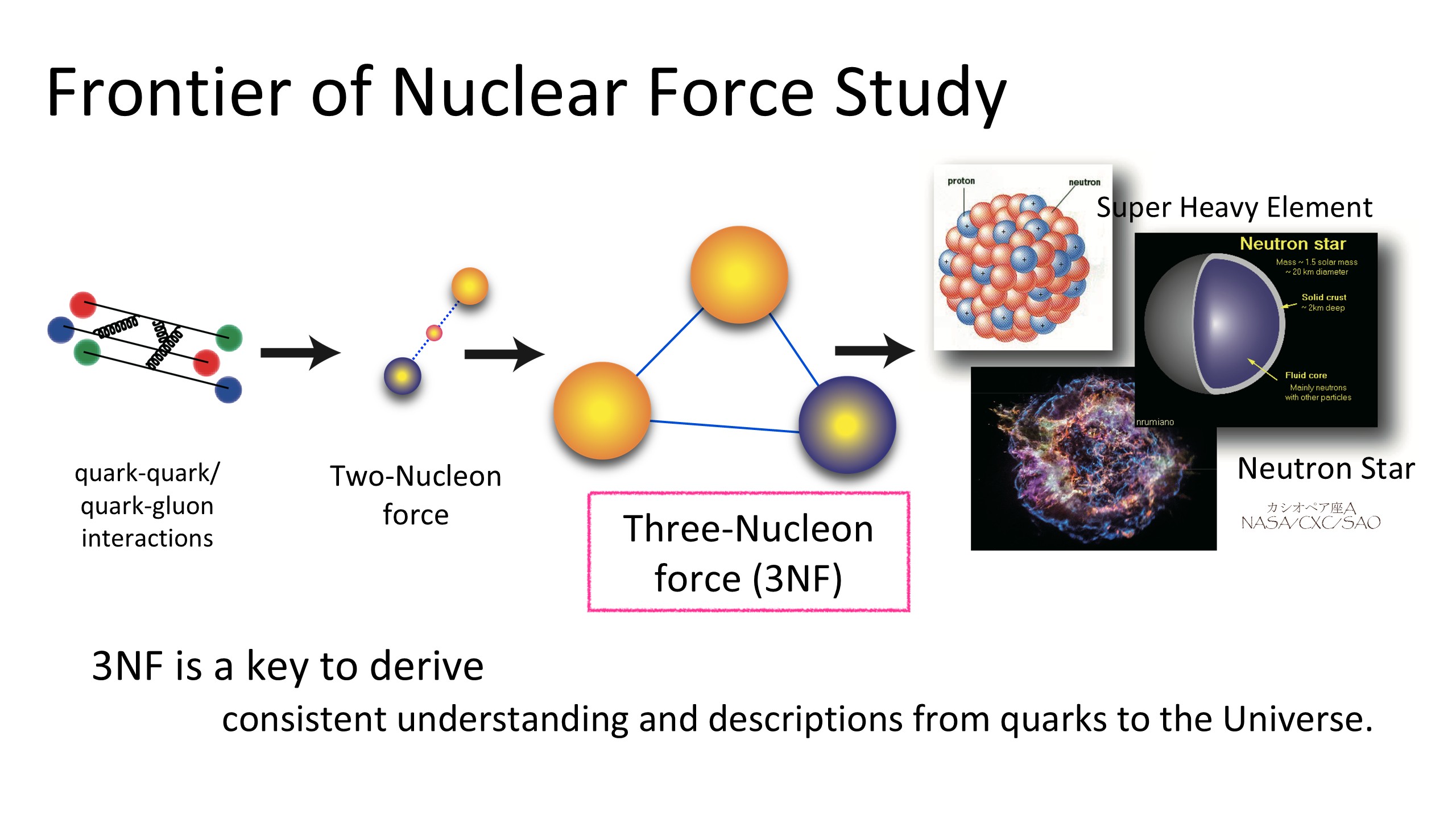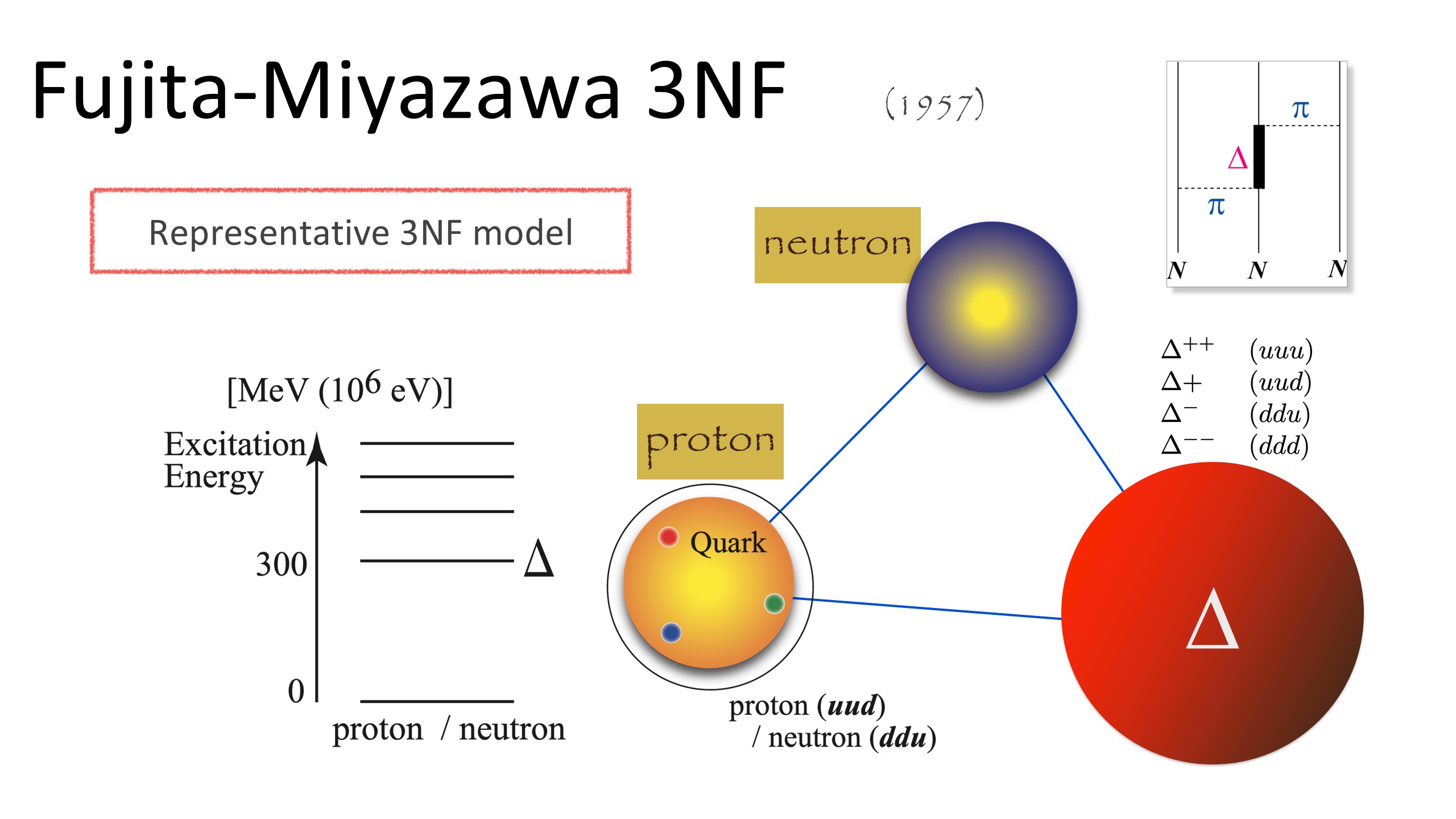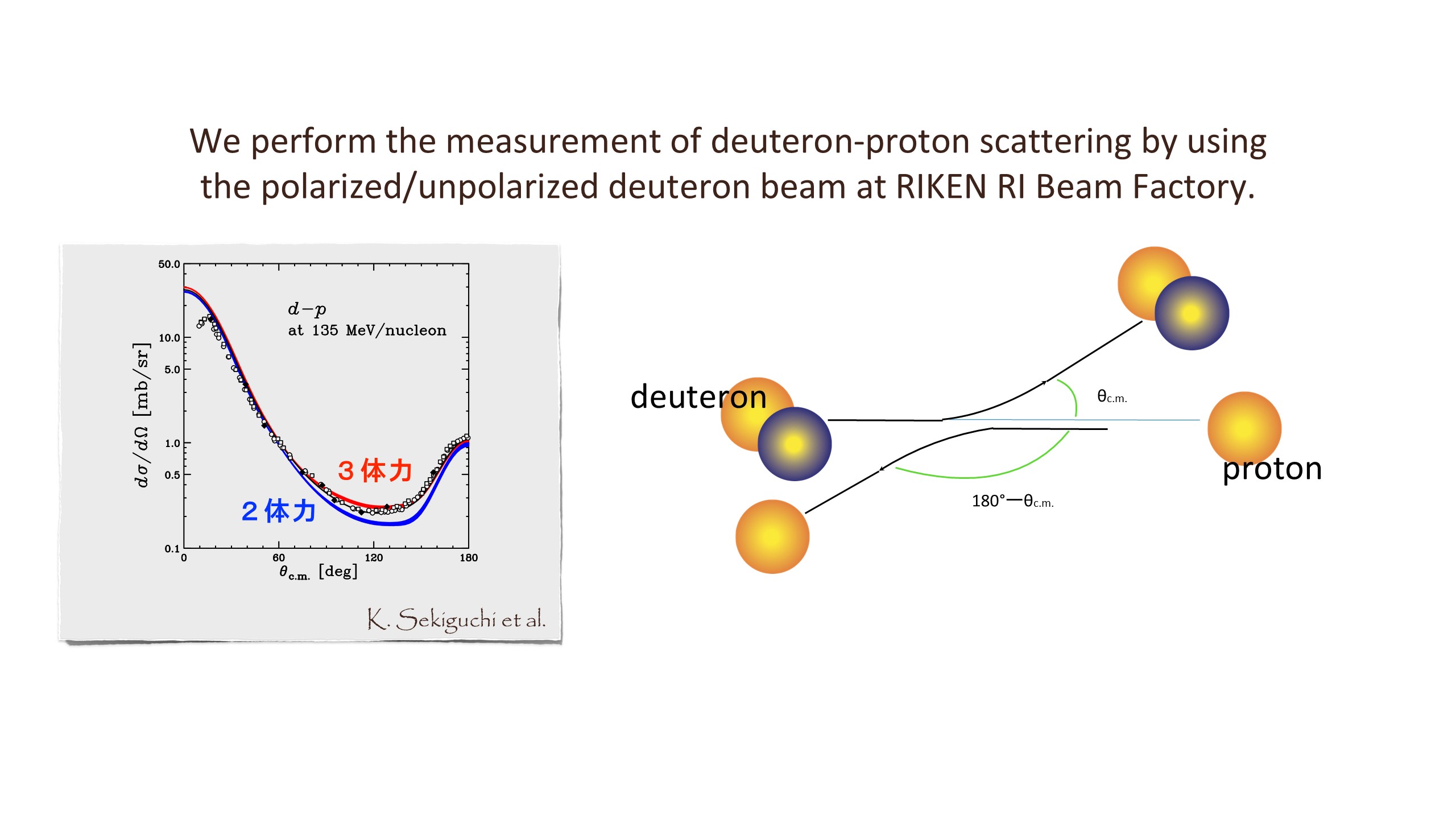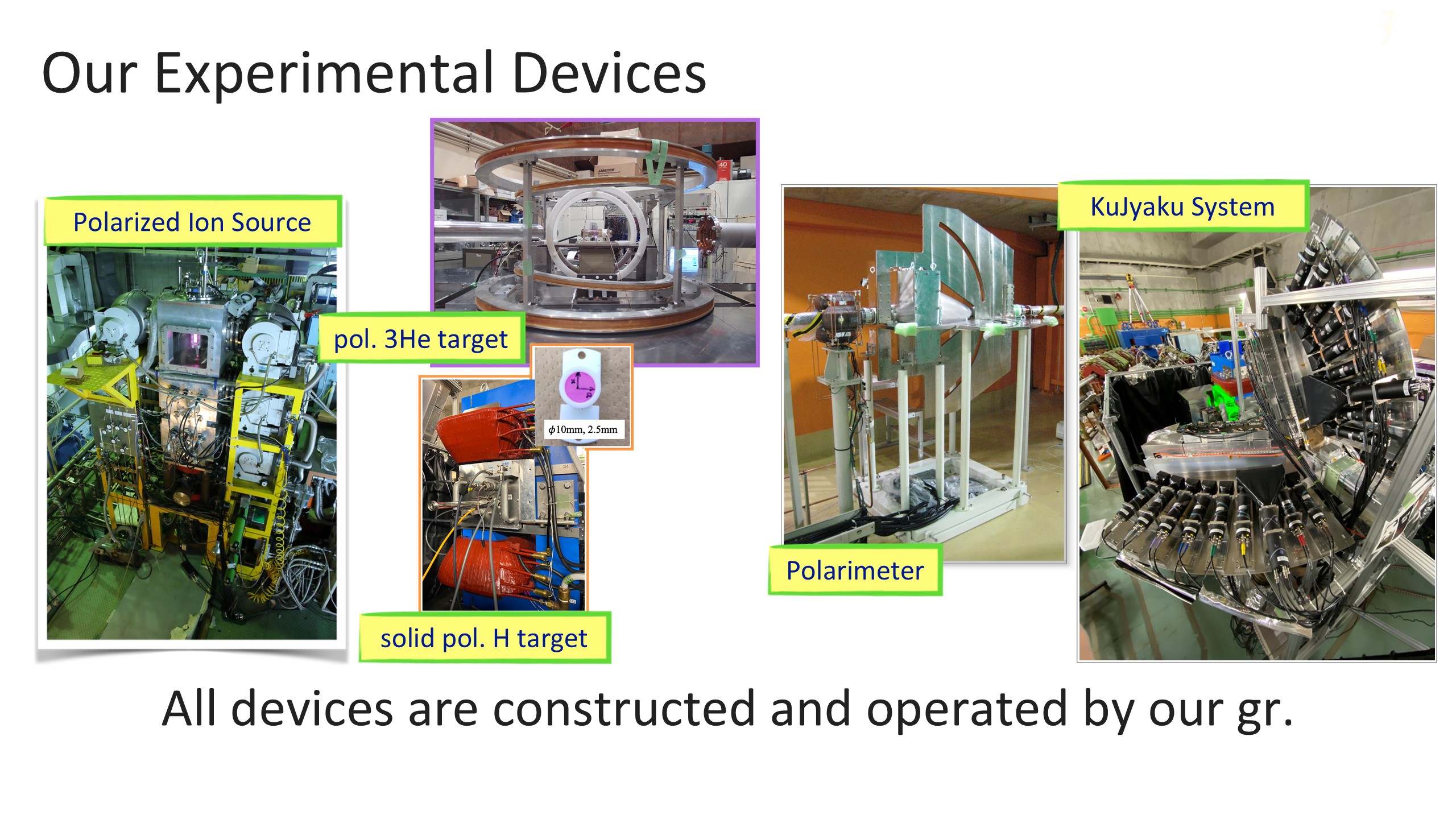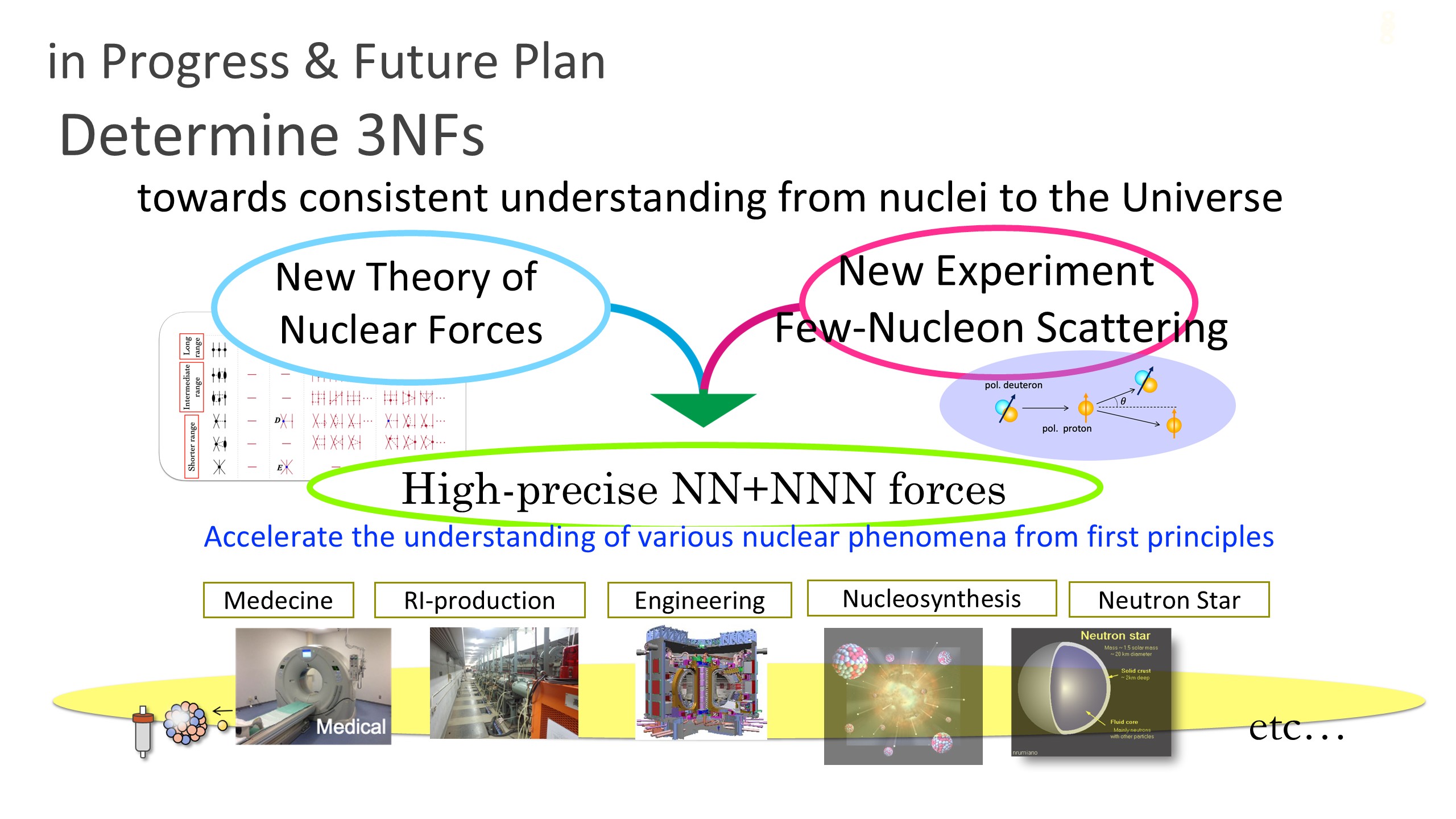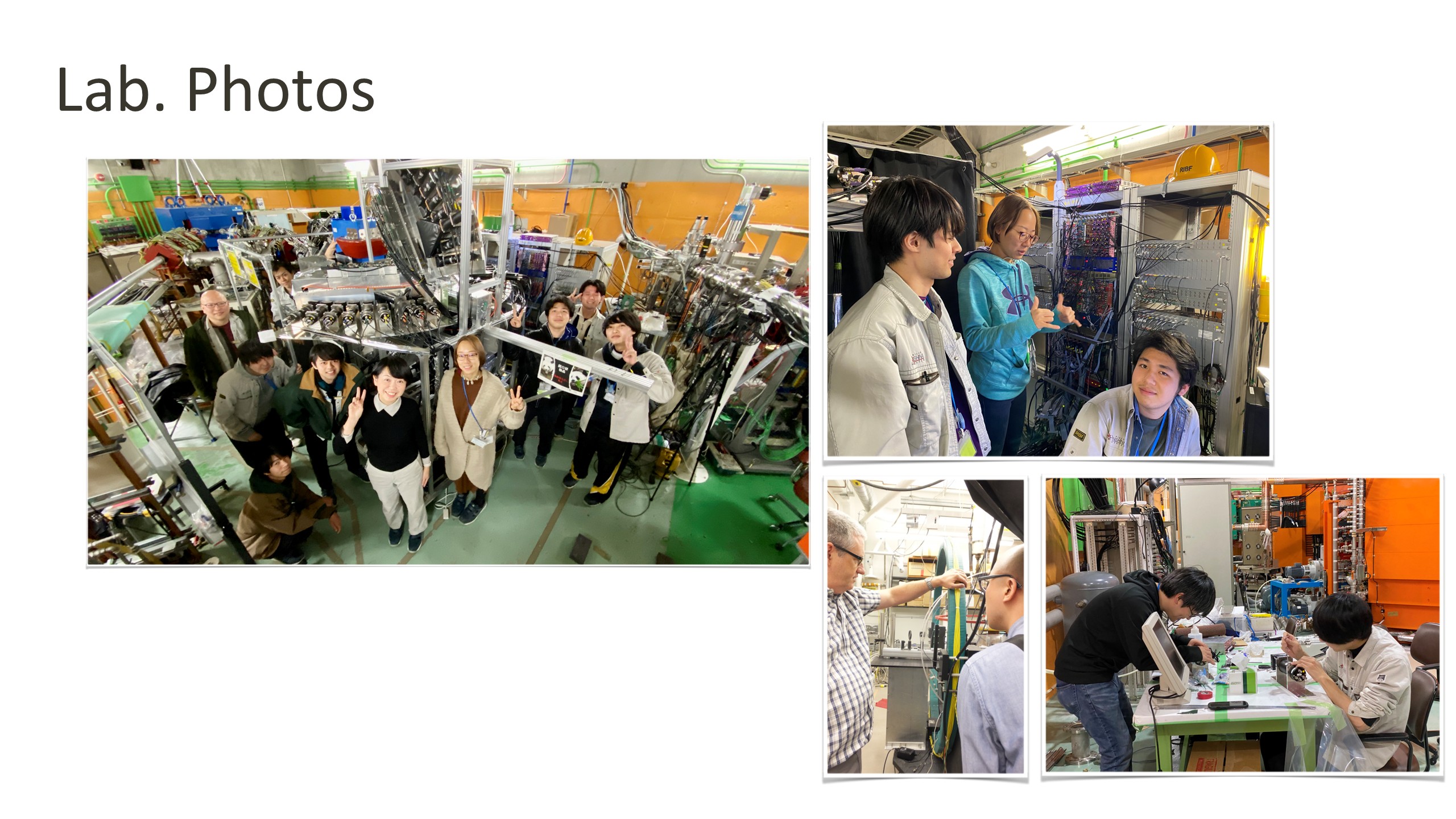Let’s have “3NF” in mind
for consistent understanding from quarks to the universe!
Atomic nuclei are the building blocks of all visible matter, from inorganic materials to the human body and, eventually the universe. Nuclear properties, such as half-life, binding energy, excitation energy, radius, and deformation, are widely utilized in a variety of applied scientific fields ranging from medicine, environment, agriculture, industry, and historical research.
Understanding the emergence of nuclear properties from first principles is a dream of nuclear physicists. The nuclear force is the heart of the nuclear physics. Recently, the importance of the three-nucleon force (3NFs) that acts in more than two-nucleon systems is strongly indicated in various nuclear phenomena.
One research activity of the lab. focuses on the project on “How to approach 3NFs and determine these forces” experimentally. 3NFs may also help to improve our understanding how nuclear forces are formulated from quarks. Let’s have 3NF in mind for consistent understanding from quarks to the universe!
How to Approach Three-Nucleon Force?
in Progress & Future Plan
One must utilize more than two-nucleon systems to investigate 3NFs experimentally. Few-nucleon scattering system has a big advantage that one can extract the information of these forces directly in comparison between the high-precision experimental data and the rigorous numerical calculations with the input of nuclear potentials. Indeed, first clear signatures of 3NF effects were found in the cross section minimum of the deuteron-proton elastic scattering at intermediate energies (around 100 MeV).
In order to obtain clear signatures of 3NFs and investigate dynamical aspects of these forces, our group promotes few-nucleon scattering experiments, which includes development of nuclear polarization technology, and polarization measurement technology. Our goal is to apply high-precision nuclear forces with the 3NF to various nuclear phenomena and to accelerate the understanding of nucleosynthesis and neutron star properties, which are of high interest in pure fundamental science, but also to advance the creation of new applied sciences and technologies.

